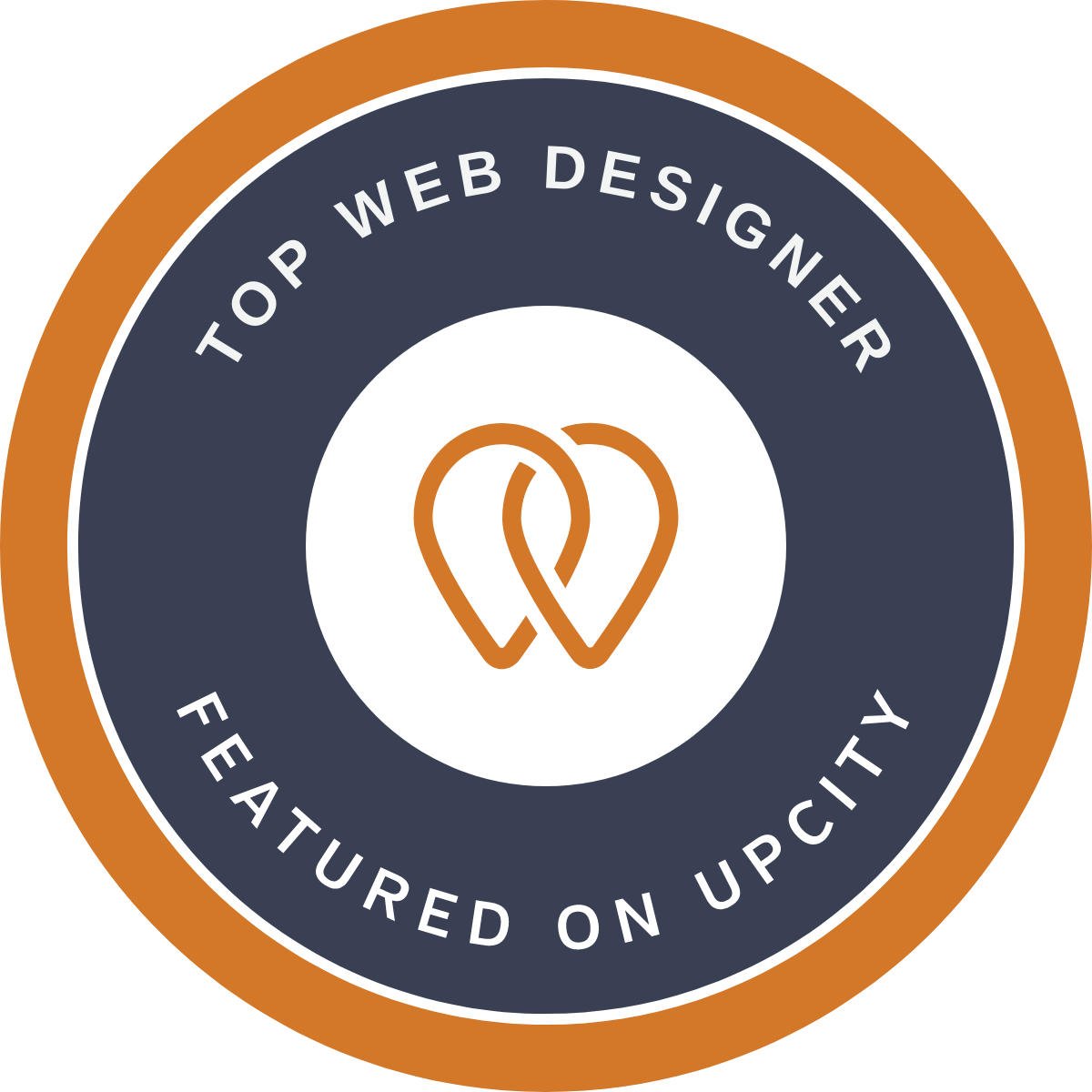Website Accessibility Services through accessiBe
We are glad you asked. The process is simple, and we are here to help you from start to finish!
First, our team will set you up with a 7-day free trial of accessiBe and install their simple JavaScript snippet in the footer of your website. Once this snippet of code is installed, the accessibility interface will become available on your website, making your website nearly 30% compliant with accessibility guidelines! To see this accessibility interface in action, just look for it in the bottom, left corner of our website on desktop or mobile devices. While configuring your accessiBe account, we will update the coloring and location of their tool to match your design and branding!
After accessiBe is installed on your website (or landing page), their AI-powered tool will scan your website and use contextual understanding, image recognition, and OCR to address the complex accessibility requirements needed for screen readers and keyboard navigation adjustments. Their system will rescan your website every 24 hours to ensure you maintain compliance, even after you make design changes, add new pages, or change your navigation. Within 24-48 hours of installing the snippet of code on your website, accessiBe will have made your entire website 100% compliant and you will receive an accessibility statement! This will definitely help improve the user experience of your website!
We are often asked if accessiBe will change something on the website, especially in the context of search engine optimization. accessiBe will not change anything for the majority of users. It will only become activated when turned on via the interface, or a screen-reader if the user is blind, as an overlay to your website and only to that visitor’s specific session. Therefore, accessiBe will not affect your design, user-interface, or performance. The entire process is automated, from remediation to becoming compliant. Some of the websites in our website design portfolio even have accessiBe installed for you to try it out. Additionally, accessiBe doesn’t collect user data, which means the service won’t affect your GDPR compliance.
A Few of Our website design experts






Pricing for Website Accessibility
The price of our website accessibility services through accessiBe is based on the size of your website.
1K Pages or Less
- Accessibility Statement & Certification
- Compliance with WCAG, ADA, EAA & More
- Screen-Reader & Keyboard Navigation Adjustments
- Accessibility Interface for UI and Design Fixes
- Monthly Accessibility Compliance Audits
- Automatic Daily Monitoring and Scans
- Dedicated Litigation Support Package
10K Pages or Less
- Accessibility Statement & Certification
- Compliance with WCAG, ADA, EAA & More
- Screen-Reader & Keyboard Navigation Adjustments
- Accessibility Interface for UI and Design Fixes
- Monthly Accessibility Compliance Audits
- Automatic Daily Monitoring and Scans
- Dedicated Litigation Support Package
100K Pages or Less
- Accessibility Statement & Certification
- Compliance with WCAG, ADA, EAA & More
- Screen-Reader & Keyboard Navigation Adjustments
- Accessibility Interface for UI and Design Fixes
- Monthly Accessibility Compliance Audits
- Automatic Daily Monitoring and Scans
- Dedicated Litigation Support Package
Website ADA Compliance FAQs
Does my website need to be 508 compliant?
According to Title I of the Americans With Disabilities Act (ADA), private clubs and religious organizations are exempt from the ADA’s requirements, so their websites are also exempt. A number of other parts of the ADA provide exemptions for small businesses employing fewer than 15 people, but it is unclear whether these exemptions apply to websites. It is the responsibility of any business, regardless of its size, to make all reasonable efforts to accommodate customers with disabilities, but the ADA fails to provide further clarification regarding what is considered reasonable.
Title III of the ADA relates to the provision of public accommodations by private businesses and nonprofit organizations. Title III states that in general it applies to any “(1) Public accommodation; (2) Commercial facility; or (3) Private entity that offers examinations or courses related to applications, licensing, certification, or credentialing for secondary or postsecondary education, professional, or trade purposes.”
The law clarifies the legal status of any websites that provide educational materials, since they are specifically mentioned. It can be argued, however, that your company’s website is a “public accommodation” of your company, which has been proven in court. As a result, the First, Second, and Seventh Circuit Courts of Appeals have all ruled that websites are public accommodations. However, the Third, Sixth, Ninth, and Eleventh Circuit Courts of Appeals have all held that a place of public accommodation must be physically located.
In 2018, Congress sought clarification from the Department of Justice, and Assistant Attorney General Stephen E. Boyd responded. In his response, he mentioned:
“…noncompliance with a voluntary technical standard for website accessibility does not necessarily indicate noncompliance with the ADA.” This is significant as it indicates that the DOJ is not prepared to make the gray areas of the law black and white. They basically put the issue back to congress and asked them to “provide clarity through the legislative process”
Although the Executive, Legislative, and Judicial branches of government have failed to provide clear answers, many private businesses are involved in litigation regarding these issues.
In light of all of that, the short answer is that ADA compliance may not be required for your website at present, but it may be in the future, and it is a good idea.
What is the most important part of ADA compliant web design?
The use of a tablet or smartphone is often more convenient for individuals with disabilities. You should be able to access your website on these devices by scaling it to the different screen sizes and changing it to fit the different formats. In some cases, such as hover effects, they work well on desktops or laptops, but they do not function on touchscreen devices, such as tablets or smartphones, so content shown on a hover must be displayed in another manner. The majority of websites solve this problem by making the content available by clicking on the link.
When most people hear the words navigation and website together, they envision the menu at the top of the page. In our case, we are discussing the manner in which an individual will navigate your website to read or gather information. If a site is not properly structured, it can be difficult for visually impaired individuals to move from one section to another. Tab navigation allows your users to navigate your site easily using keyboard shortcuts. Screen readers rely on this type of navigation to read the website in the correct order.
You should ensure that all buttons, images, icons, and other visual elements on your website are functional for all users. For all devices and tools to be able to identify and interact with these elements, they will need to be labeled appropriately.
A button’s title attribute should always be the same as the button’s text. In the case of a user with a tremor, they could use a voice activation program to interact with your site, in which case they will say what appears on the button, such as “send” in order to submit the contact form. If the title of that button is ‘submit’, the program will not be able to identify the button and the action will fail. As a result, the user may become frustrated and you may lose a potential customer.
As with buttons, images require an attribute to identify them. This is the ‘alt’ tag for an image. It is important that this attribute appears on all images and should describe the image so that the user receives the information he or she would receive from viewing the image. As an example, if the image you are displaying is of two happy people smiling, but it appears in your testimonials section, the alt text should read “photo of two satisfied customers”. Without the “alt” attribute, the screen reader will not be able to interpret the image for visually impaired users.
The issue with icons is similar to that of images, but they are handled differently. They are a mix between a button and an image. Since most icons are SVG or fonts, the ‘title’ attribute will be used for these, just as with a button, but the value will be the description.
There are two methods of separating elements in web layout: padding and margins. When padding is added to an element, the element’s edge is separated from its content by that padding. This will allow you to enlarge an element. To give an element some breathing room, margins will add space around it.
It may be difficult for someone with tremors or a loss of hand-eye coordination to click a small button. By padding the buttons, all users will have a larger target to click, and by adding margins around the target, all users will have an easier time locating the right selection and not accidentally clicking on an adjacent element.
For readability, all text should always be text. It may seem straightforward, but it is not. The information contained within an image or simple PDF will often be added to websites without a way for the screen reader to read the information. Usually the ‘alt’ attribute on the images will resolve the issue, however, this is not an option for PDF images. You should create a page for the PDF and provide the user with the option to download the PDF, but also have the information available in another format. Whenever possible, PDF information should be available as text.
Approximately one in 12 males and one in 200 females are color blind, according to the National Institutes of Health. To ensure this population is able to read the content, you should select contrasting colors to make the text more readable. A white background with black text is a safe bet, but a green background with blue text may pose a challenge.
Is there a checklist for ADA website compliance?
In order to ensure your website is compliant with the ADA, you should review the web content accessibility guidelines (WCAG) 2.1.
How can I confirm my website should be ADA compliant?
Companies with fewer than 15 employees are exempt from the ADA, but even smaller companies should adhere to as many guidelines as possible to ensure that their website is available to as many potential clients as possible.
What is the difference between Section 504 and Section 508?
A company must comply with Section 504 of the ADA for public accommodations, among other requirements. Section 508 pertains primarily to government agencies at the federal, state and local levels, but it clarifies web accessibility. ADA compliance of websites is addressed in both sections of the law.
How can I check if my site is ADA compliant?
Many tools are available to scan your site for compliance. In order to locate the main issues, WAVE is a good tool to begin with: https://wave.webaim.org.
What is the difference between WCAG 2.0 and WCAG 2.1?
Essentially, these are the same guidelines, but 2.1 has been updated to include screen orientation, hover/focus content, label names, and status updates, among other changes.
Hear what our customers are saying











